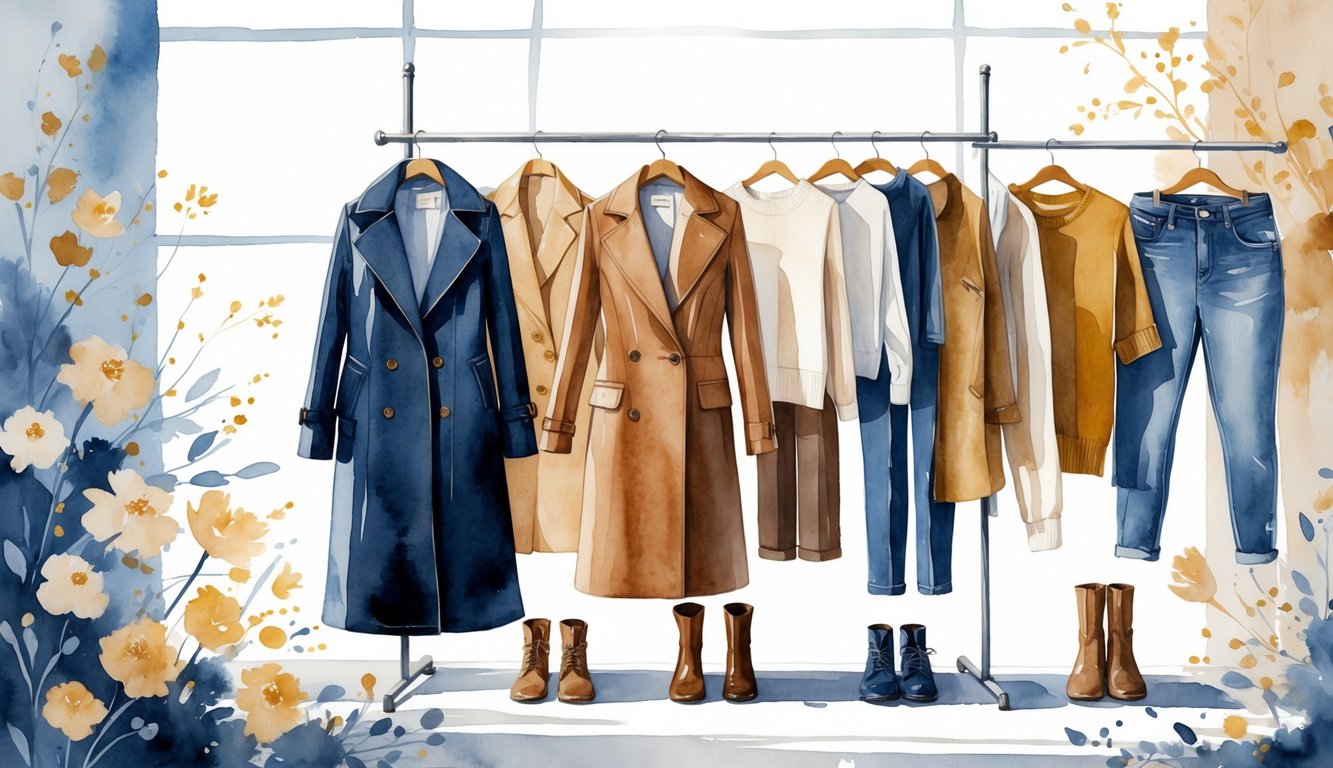
The Sudden Surge: Why Investment Pieces Outsell

Something’s up—people I know (and, fine, me too) are skipping the “affordable” basics and buying the big-ticket stuff. The numbers are wild: designer sneakers, classic wool coats, all moving faster than $9 tops. It’s not even about buying less. It’s about buying smarter, getting pieces with actual staying power, better materials, and—let’s be real—stuff you can brag about.
Evolving Purchasing Decisions
I almost bought another bulk pack of tees out of habit, then stopped myself. Did you see Who What Wear’s data? Capsule essentials—leather boots, structured blazers—are flying, while cheap denim just sits there. This isn’t about pinching pennies. People are asking, “Can I resell this? Will it last?” My friend’s Burberry trench from 2018? She still gets compliments and says it “paid for itself.” Later Ever After says investment pieces are the backbone of a real wardrobe. And, yeah, post-pandemic, nobody wants to waste money on junk.
I still flinch at sticker shock, but honestly? I don’t miss my graveyard of $5 cardigans.
Social Media’s Role in Driving Change
Instagram, TikTok—those endless reels of “what’s in my closet” and try-on hauls—are making it embarrassing to keep buying fast fashion. Everyone’s flexing their old, still-perfect loafers. Viral posts show off timeless stuff, and micro-influencers are fighting over who found the best investment piece. Taste is viral now. Closet cleanout videos? People dumping mountains of cheap clothes, regretting it. It’s not about having more, it’s about having the right stuff. Even my cousin, who used to roll her eyes at “expensive basics,” just posted a reel unboxing a tailored jacket and said, “final purchase this year, for real.” Social media’s making us all rethink what we buy—and what we keep.
I still double-tap those before-and-after closet reels, but then I look at my three unraveling t-shirts and wonder why I keep them.
Sustainable Fashion and Ethical Shopping
Honestly, it’s weird seeing “limited edition” coats selling out faster than $9 tanks at the big chains. Is it because people finally realize their impulse buys end up as landfill? Or maybe it’s just nicer to own something that wasn’t made in a sweatshop. Either way, nobody wants to hear their favorite tee has a carbon footprint bigger than their car.
Environmental Impact of Investment Pieces
Grabbing a “forever blazer” off the rack (I tried three last month—only one didn’t fit like a potato sack) just feels different than scrolling through endless polyester basics. I never thought about my old jeans’ CO2 emissions, but then I read that fast fashion’s annual greenhouse gas output is up there with air travel. Scientific American says fashion waste is out of control. A $250 coat that lasts ten years? Less landfill drama than a drawer full of weekly hauls. It’s like the difference between composting and tossing leftovers—boring, but it adds up.
But let’s be real, “sustainable fashion” is a buzzword half the time. “Eco” tags sometimes mean nothing. I read about upcycling, mending, natural dyes. Supposedly, investment pieces use less energy, fewer synthetics, sometimes even solar-powered factories. Still haven’t found organic cashmere socks that last, but at least I don’t buy six cheap pairs every winter now.
Labor Practices and Garment Factories
Look, I’ll admit it: I used to not give a damn who actually stitched my jeans. It just didn’t cross my mind until my friend sent me this photo from her old factory job. “Staff only” sign, breakroom with a single flickering light, sewing machines going full throttle, sticky notes in four languages. Now I can’t really unsee it. I’d love to believe that shelling out for “investment” pieces means someone’s double-checking labor conditions, but, uh, who’s really checking? Supposedly, some folks are tracking this stuff, and they say progress is glacial. Garment workers still grind through 12-hour shifts, and meanwhile brands plaster their websites with badges, living wage promises, and staged “factory visit” photos. Sure, cool, but who’s verifying any of it?
Honestly, it’s a mess. I know designers who literally FaceTime every supplier. Still, things go sideways—like someone’s “organic cotton” shipment arrives laced with polyester. “Sustainable labor” is this wobbly, moving target, and every retailer’s bragging about progress. Do I trust the GOTS label more than a fancy marketing blurb? Maybe, but not by much.
The Influence of Clothing Retailers
Retailers are in panic mode. One week it’s markdowns on polyester sweaters, next week it’s linen suits “built to last generations.” Some brands on this list are kind of transparent, posting charts about where their fabric comes from and slicing up profit margins like they’re on Shark Tank. Is it convincing? Not really. Reviews say most big retailers barely do their own audits. I keep thinking—how easy is it to call your supply chain “clean” after a single phone call?
But hey, money talks. Suddenly every chain store is rolling out “investment basics”: Japanese selvedge denim, recycled wool, “ethical” trench coats blasted all over Instagram. My inbox is a graveyard of style guides promising “timeless” pieces, even though half the designers admit it’s values, not trends, that keep people coming back. Also, can anyone explain who decided organic bamboo socks should cost thirty bucks? I’m still waiting.



